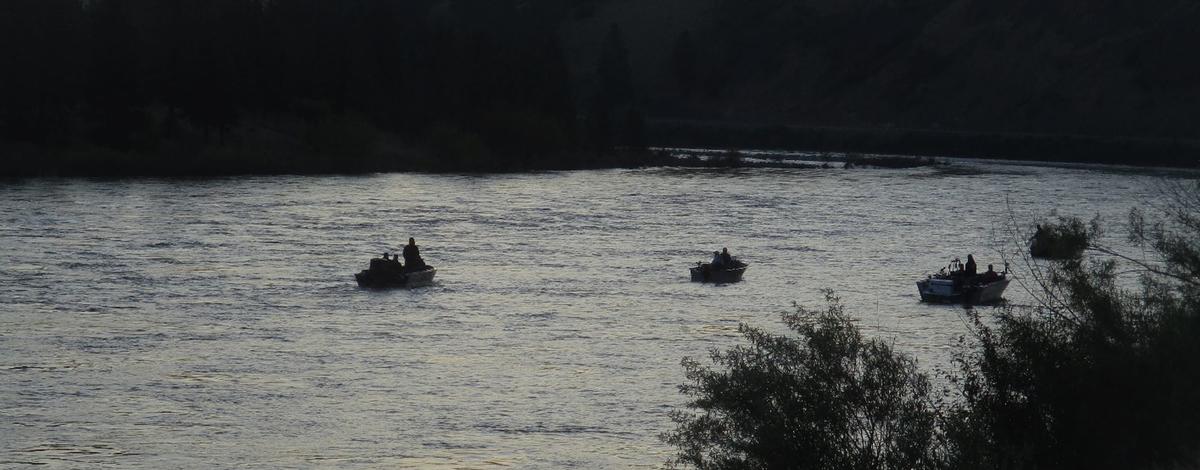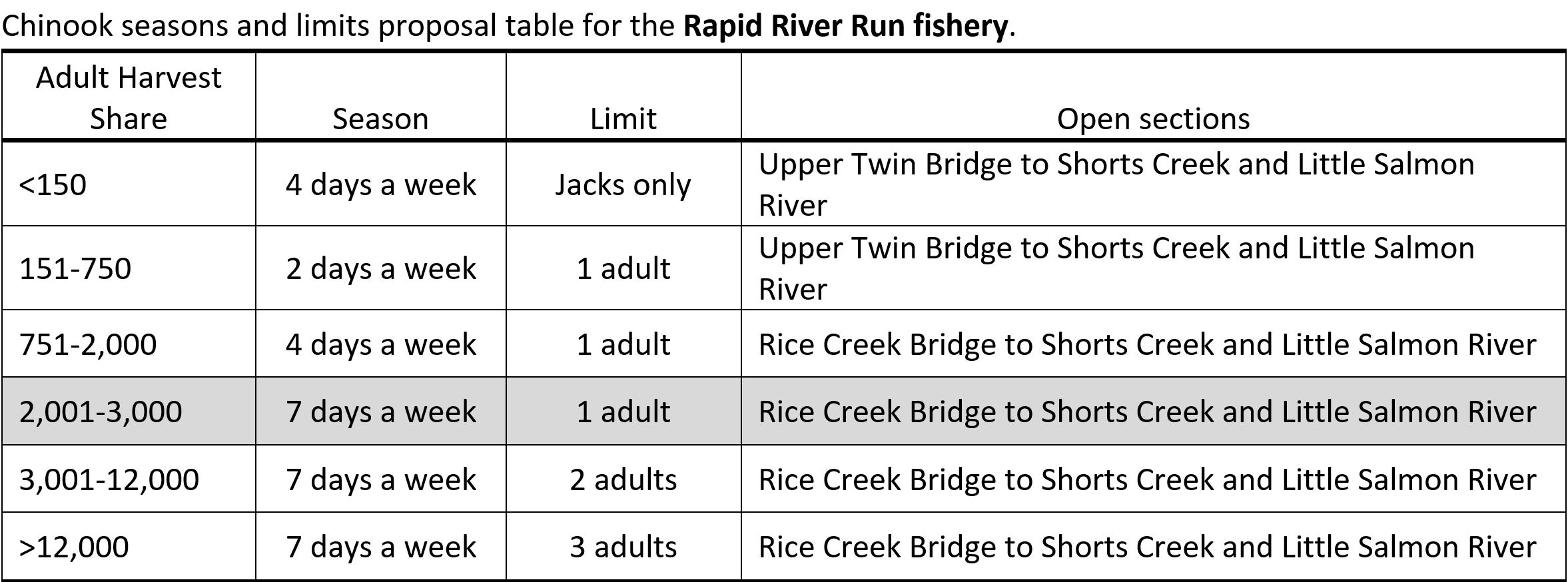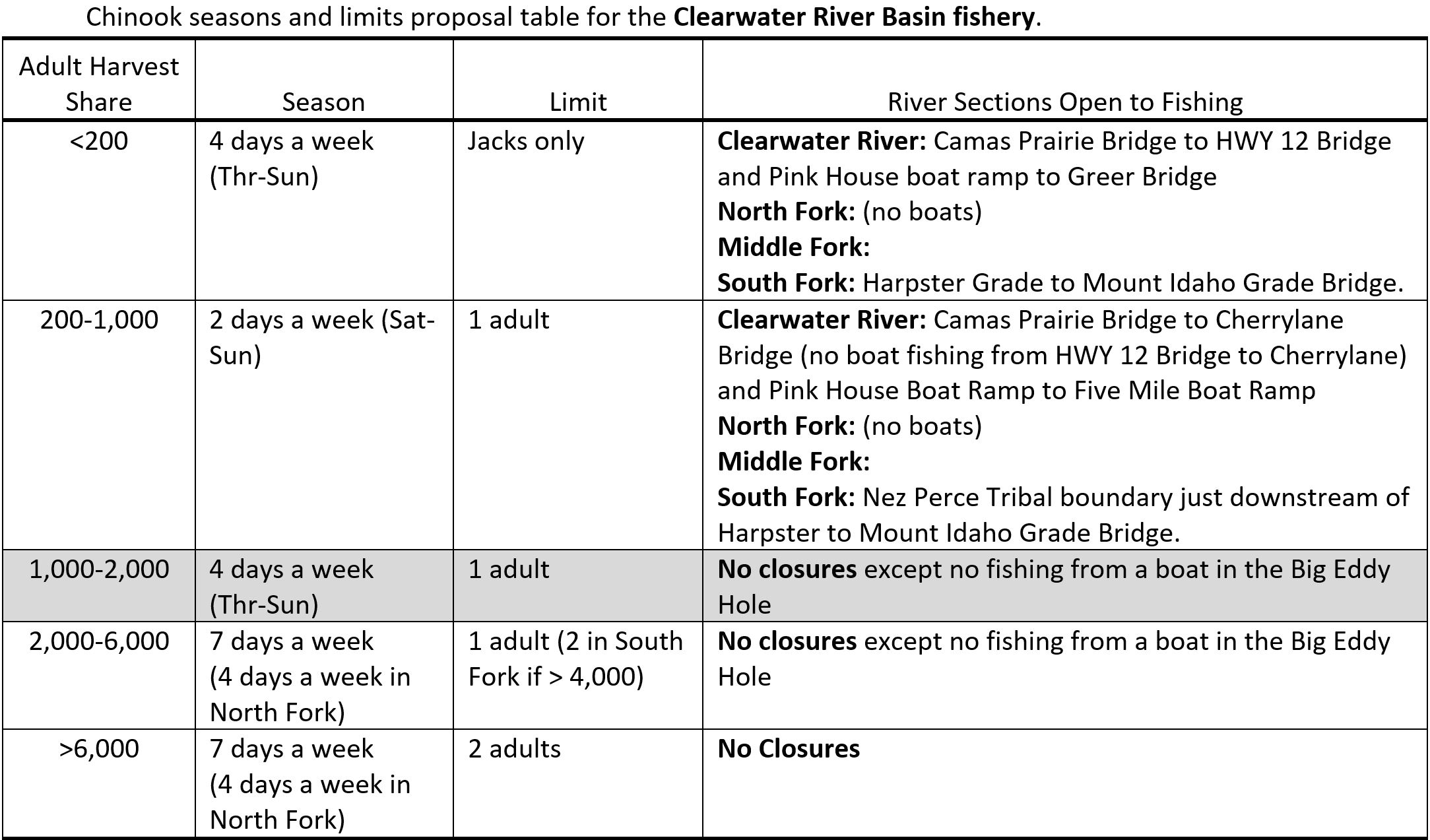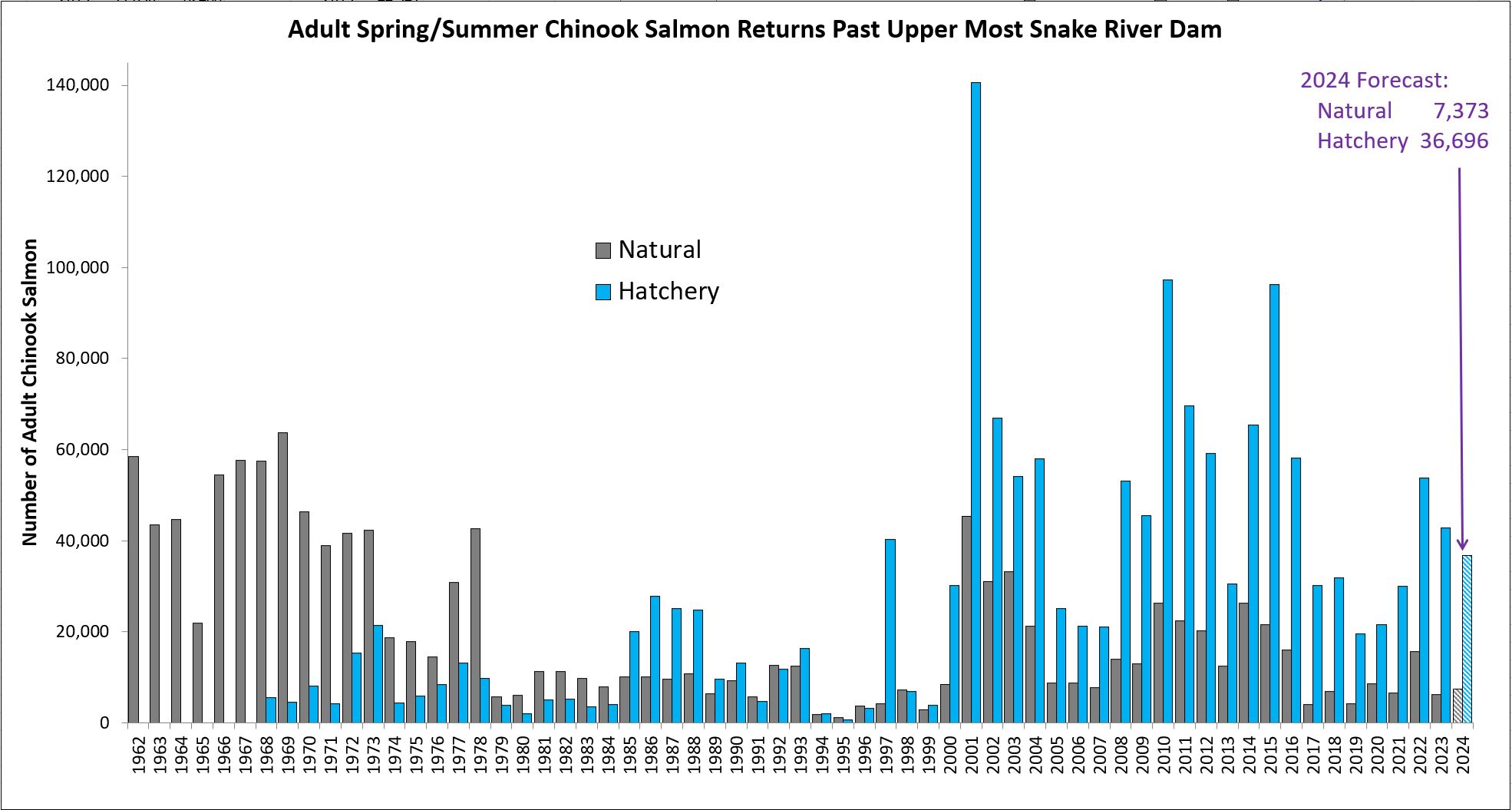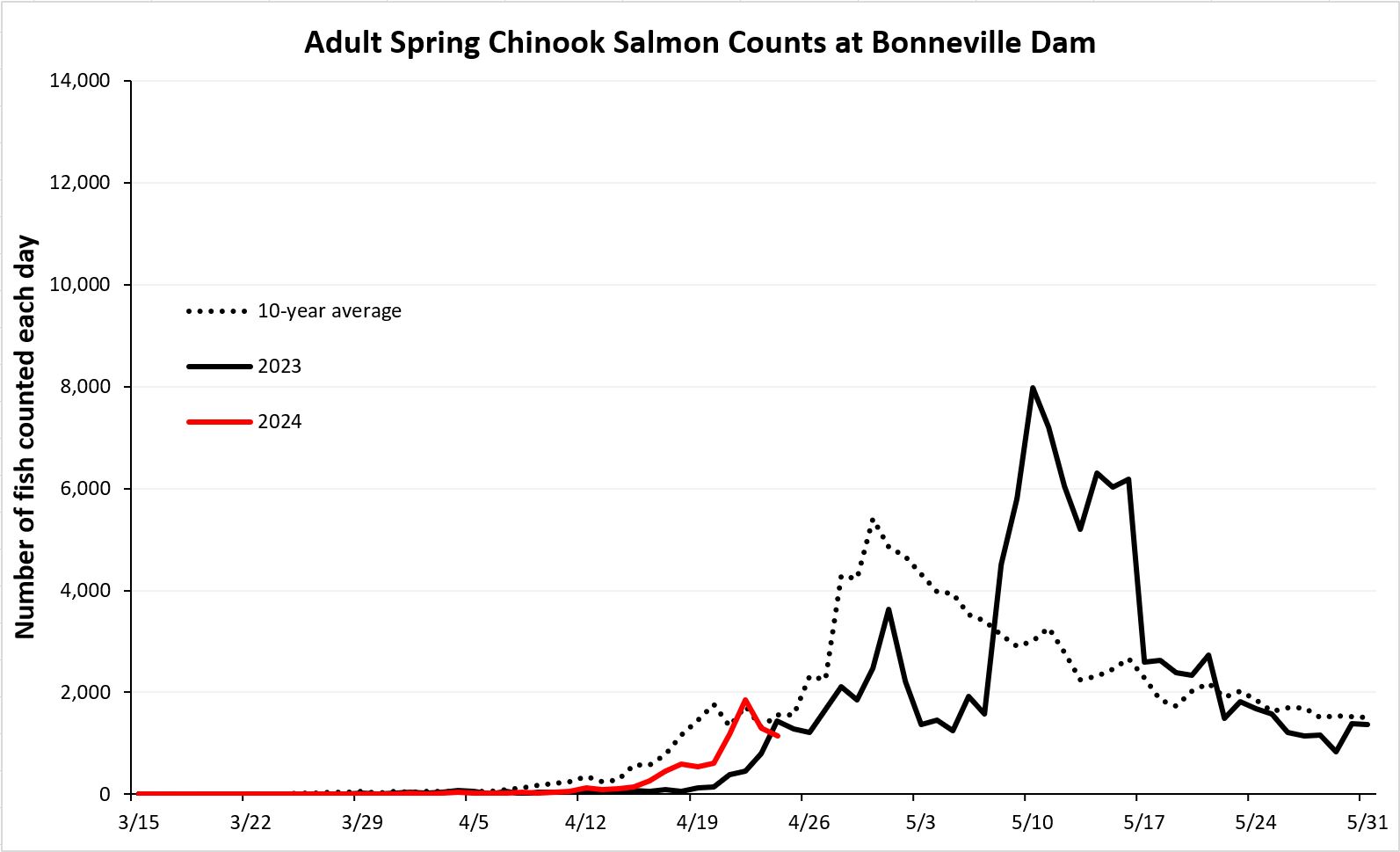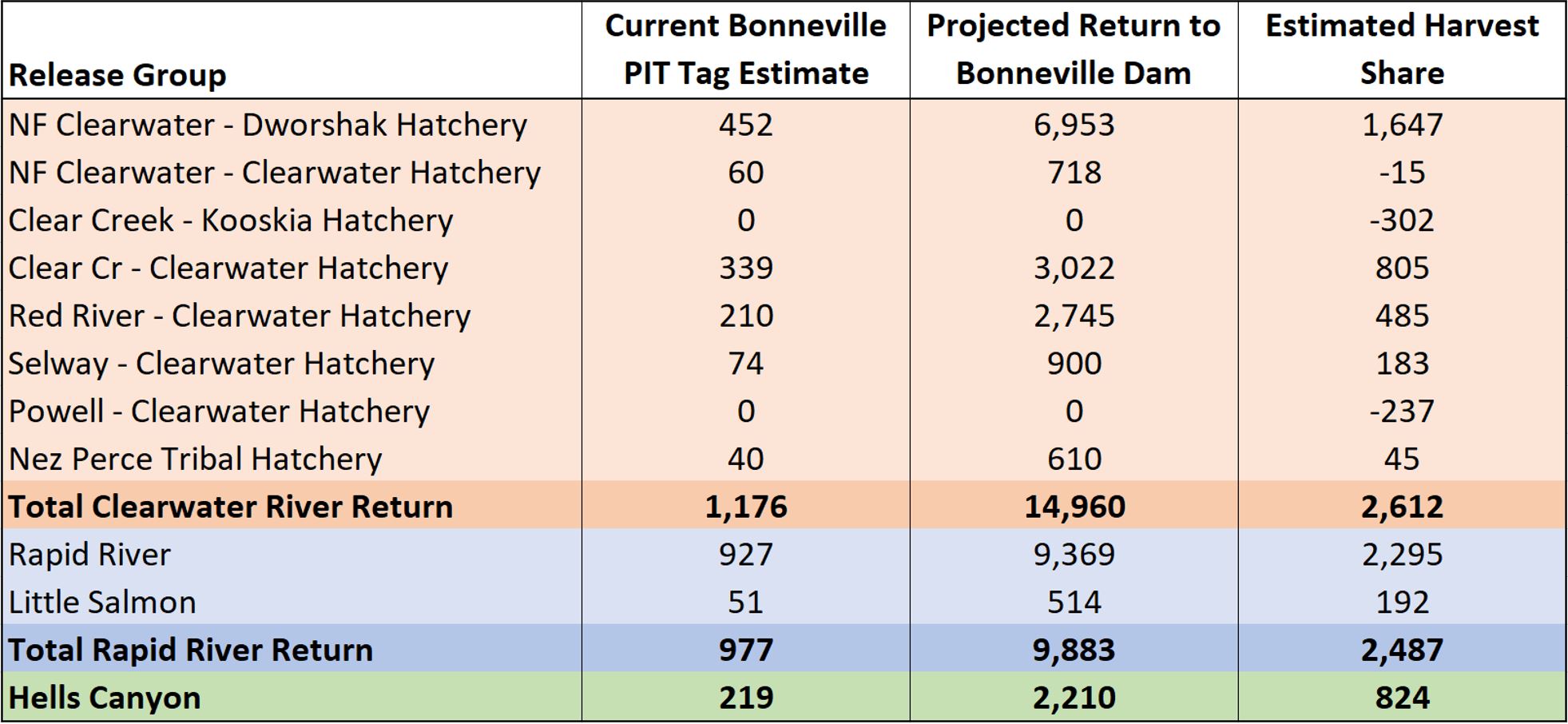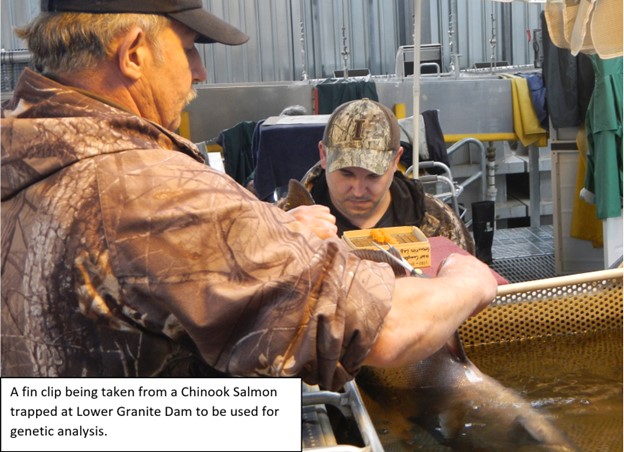Hi everybody.
The spring Chinook Salmon season starts this Saturday (April 27, 2024), so I figured it was time to start providing my weekly spring Chinook Salmon fishery updates. These updates will cover the Rapid River Run fishery that occurs in the lower Salmon and Little Salmon rivers, the Hells Canyon fishery which occurs from Hells Canyon Dam downstream about 50 miles to Dug Bar boat ramp, and the Clearwater River basin fishery.
My plans are to provide weekly updates on these spring Chinook Salmon fisheries from now until they close. These updates will provide information on what the run looks like, what our harvest share is, how many fish have been harvested, where people are catching fish, and any changes in the seasons or limits that might have or will occur. I will try to get these updates out by at least Wednesday each week (I will skip next week due to an out-of-town conference I will be attending).
Seasons and Limits
For those of you who are unsure of what the seasons and limits are for this year, you can click on this link (2024 spring Chinook rules) to get all the details on what river reaches are open, when the fisheries occur, and what the limits are. Because changes in the fishery can occur quickly, before going out, please be sure to check this website, contact IDFGD staff, or follow the blogs I put out to get an up-to-date status on the different fisheries.
Several of you asked, when providing my first update, if I could explain what type of public support there was for starting the seasons the way we did. I think this is a great idea, so I have added the section below (2024 Public Input and Season Setting) that covers why the Fish and Game Commission adopted the seasons and limits they did to start the fisheries this year. If this is not of interest to you, and you just want to learn what this year’s return is looking like, just skip down to the section called “2024 Forecast”.
2024 Public Input and Season Setting
First, I want to thank all of you who provided comments on how you would like this year’s spring Chinook Salmon fisheries managed. Without your involvement, we wouldn’t be able to manage these fisheries in a manner that is satisfying to most anglers.
One thing people should be aware of is that over the years we have worked with the public to develop tables that describe the types of seasons and limits they would like to see implemented based on the size of the run. We often refer to these tables as “harvest matrixes”. I have included the harvest matrix for each of the three spring Chinook Salmon fisheries below. You will notice that these tables all have the same column headers, and the first column header is called “Adult Harvest Share”. The more harvest there is available, the more days of the week you can fish, the higher the limits will be, and the more areas will be open to fishing. The goal is to provide lots of fishing opportunities when the runs are large, but as the harvest shares decline, regulations would become more restrictive to help extend the length of the season and help IDFG better distribute harvest fairly. These tables have been tweaked over the years, typically at the request of the public, to provide more of the types of opportunity the public desires. People should be aware that in our public input process (public meetings and internet survey) we ask people if they are supportive of the guidelines provided in these harvest matrixes, and typically we go with “majority rules”.
Rapid River Run Fishery
The harvest matrix below is for the Rapid River run fishery, and the reason there is a row shaded in grey is because this year we forecasted the harvest share would be about 2,500 adult fish. This year we asked the public (at public meetings and through the internet) if they wanted to start the season using the guidelines described in the shaded area of the table below or if we should start with more restrictive seasons and limits (next row up) seeing last year the run came in significantly less than forecasted. About 42% of the people who responded to this question said they wanted us to follow the guidelines in the grey shaded row in the table below; 53% said they wanted us to start more restrictive (row above the grey); and 5% said they didn’t like either option. In this case, we went with “majority rules”, and IDFG staff recommend to the commission to follow the season and limits specified in the row for harvest shares between 751-2,000 adult fish (4-day/week fishery and 1 adult daily limit). The commission adopted this recommendation.

